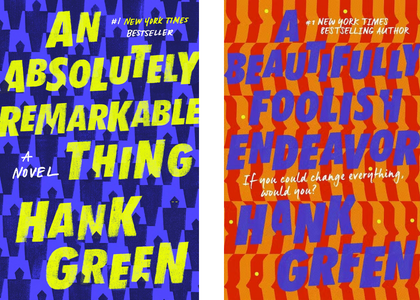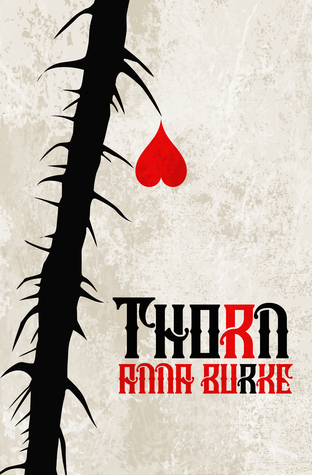After stumbling upon the announcement of Elizabeth Gilbert’s coming out last month, l thought I’d key a quick Google search in order to become acquainted with the woman who’d rocked her world. It took the perusal of only a couple results to discover that Gilbert’s relationship with Rayya Elias is no fly-by-night romance; rather, Elias has been her dearest friend and confidante for the past fifteen years. So, when I learned that Elias had published her memoir in April of 2013 (with an introduction penned by Gilbert herself), I grew determined to get my hands on a copy. Little did I realize at the time that Elias would rock my world as well.
Born in Aleppo, Syria, Elias and her family knew more than a modicum of luxury, residing in an eight-room flat, complete with long marble hallways and manicured gardens to look down upon from the several balconies above. Beyond a handful of secrets and emotional scars, the family made pleasant memories while surrounded by the warmth of its members, good friends and caring neighbors; yet, the relative ease of daily life began to slip away with the rise of nationalism as the Ba’ath Party came into power. Amid mounting religious and political tensions and threats to his financial security, Elias’s father decided they had little choice but to leave all they knew in order to seek safety and a better life in America.
Elias was only seven years of age when her family arrived in Warren, Michigan, near Detroit, and the transition was anything but easy. Not only was their standard of living well below what they enjoyed in their homeland, but cultural differences set Elias apart as the target of incessant and utterly relentless bullying. All the while, her desire to assimilate into American culture left her feeling alienated from her family and the local Arabic community within which they had found a sense of home.
It was only in her early adulthood that Elias’s fashion-forward outlook and talents, not only as a hairstylist but a musician as well, provided her the positive regard that enabled her to flourish. The club scene, with its techno new wave vibe, enlivened and inspired her while offering the promise of a world to which she belonged.
… this was the 1980s, my time, and I was enamored with both the music and the look. They allowed me to escape; with no rules or boundaries, I could express myself and be part of an underground culture that accepted my newfound ambivalence toward being “normal,” and make cross-gendered sexuality look cool. Instinctively, I got it. Everything about this genre spoke to me, and it was the first time and place in society that I felt cool and accepted by gentle, intelligent, creative, and like-minded people…. I’d found my clan, my own pack of wolves.
With two careers budding simultaneously, Elias began to wonder if she might be outgrowing Detroit. She craved an independence beyond her family’s protective embrace and the freedom to discover her most authentic means of self-expression, both creatively as well as sexually. Thus, Elias decided to petition the owner of the salon at which she worked for the opportunity to prove herself on the East Coast whenever one became available. As luck would have it, there was need for an artistic director in Stamford, Conneticut, just 45 minutes outside of New York City. If Elias wanted it, it was hers.
The bulk of Harley Loco follows Elias’s rise as a high-end hairstylist and cutting-edge musical force into her descent within the hell of hardcore drug addiction, complete with overdoses, arrests, evictions, threats to her life, homelessness and a well-remembered stint at Rikers Island. All along the way, she takes the time to introduce her reader to those who inhabited her world during those tumultuous years, from lovers, party buddies, drug lords and down-and-out junkies to fair-weather friends and guardian angels. She shares heartrending moments of the most intense love and desire for a woman amid several doomed attempts at navigating the ever-shifting terrain of polyamory, the no-strings-attached comfort of a stranger’s bed as well as the loss and devastation sustained within a committed relationship when another’s love, regardless of how true, cannot come close to competing with that initial high.
Aside from a handful of returns to Detroit, Elias’s memoir is set against the backdrop of New York’s Lower East Side as it was in the 1980’s and early 90’s with its underground clubs, drug-dealing bodegas, shooting galleries and dens. The seediness of Alphabet City, so vividly drawn through its cast of characters, proves enthralling as Elias proceeds to paint an utterly visceral portrait of what the neighborhood was prior to gentrification. Though I spent only one night amid those streets during that epic era, the experience remains permanently etched within my memory, for the edginess of the neighborhood was nothing less than mythic in its time; and, given her penchant for telling things precisely as they were, Elias reveals with uncompromising grit the reality behind the legends that we had all so naively romanticized from afar. Though narrated with an ambivalent air of nostalgia, Elias’s innumerable falls from grace are evidence of the true underbelly of a drug culture that film, literature and the other media of its day portrayed as captivating rather than demoralizing and often deadly.
Given that Elias lived to tell the tale, it’s probably safe to say that the unfathomably hard lessons learned while looking down a gun barrel, seeking shelter within Tent City at Tompkins Square Park or writhing, dope-sick, on the cement floor of a holding cell were all a part of a journey which awakened a voice within her—a voice which, at last, spoke with certainty, “Rayya, you don’t need to do this anymore. You can be free.”
Immediately after the acknowledgements, Elias includes a section entitled “Music Links,” which directs readers to her website, where they can access the six tracks that she considers something of a soundtrack to Harley Loco. As you might expect, I beelined to my laptop, keyed in the web address and promptly pressed “play.” With palpable harkenings of Aimee Mann, Portishead and early Sleater-Kinney, the tracks presented so satisfyingly meld that which influenced us back in the day with the hard-earned jadedness of the present. My favorite track, by far, is “Fever,” which boasts a chorus I simply can’t shake: “Got a fever in my soul, cancer in my heart; never had any place to shelter, never had anywhere to start.”
According to Gilbert’s September 7th Facebook post, it was Elias’s diagnosis of pancreatic and liver cancer that brought her to crossroads, where, after fifteen years of friendship, she chose, what else, but love.
Death — or the prospect of death — has a way of clearing away everything that is not real, and in that space of stark and utter realness, I was faced with this truth: I do not merely love Rayya; I am in love with Rayya. And I have no more time for denying that truth. The thought of someday sitting in a hospital room with her, holding her hand and watching her slide away, without ever having let her (or myself!) know the extent of my true feelings for her…well, that thought was unthinkable.
It’s beautiful yet heartbreaking, isn’t it, that which brings us face-to-face with who we are and who it is that we truly love?
I couldn’t be more grateful for the opportunity to come to know Elias through her memoir as well as her music, which has not only brought me back to the ecstatic sensation of inhabiting my own skin but provided me a sense of the badass that I always fantasized I’d been. I wouldn’t be the least bit surprised if her soundtrack were to end up playing a role in the creation of my own.
In conclusion, to quote Gilbert’s courageous coming-out post once more, “Truth is the force that guides us to where we need to be in life, but love is the power that heals us once we arrive there.”
With that in mind, I wish both Gilbert and Elias the most treasured of journeys together.


